The slow, soaking rains this week followed by slightly cooler temps make for excellent planting weather. We dare say it’s feeling a little fall-ish! Even though it’s still warm out, right now is the time to plant your fall veggie garden to ensure you can get a good harvest. Here’s our guide to growing the best veggies this fall – plenty for you and plenty to share.
1. Pick Your Plants – Know Your Timing!
Last chance to plant tomatoes and peppers! The average tomato needs 70-80 days to mature and produce fruit. That means they’ll be ready around the mid-late November if we plant now. Similarly, most peppers need 60-80 days to maturity. Be sure to get them planted now or very soon so you can get a good harvest before we have chances of cold weather which tomatoes and peppers can’t handle. While we’re reaching the end of the window to plant tomatoes and peppers, cool weather veggies like broccoli, cabbage, kale, Swiss chard, and cauliflower are just arriving! Even though these can handle cooler temps, you still need to get them in the ground in September to ensure you’ll get a good harvest. Radish and carrot seeds should be started this month as well. Take a look at our Fall veggie planting schedule. And save space for citrus trees, figs, and other fruits! They’ll all be arriving this week and next!
2. Prep and Amend Your Soil
Corpus Christi clay soil and sandy soil in Rockport or on the island both need a boost to make them suitable for growing veggies. Very simple – add compost! Whether you’re in clay or sand, we recommend 1 bag of Nature’s Blend or Cotton Burr compost per 12 square feet to establish a veggie bed. Just work the compost into the first 6-8 inches of the native soil and you’ll have a nice loose and bioactive mix ready for planting. You can use the same rough formula when filling raised beds, or use our Gardener’s Magic soil blend which is formulated for raised beds and already has the compost and other nutrients mixed in – just pour and plant! You can add even more life to your veggie soil by supplementing with earthworm castings, dried molasses, and Bio-Tone starter fertilizer with mycorrhizal fungi. Think of these as probiotics for your soil. Just like our gut microbiome keeps us healthy and balanced, an active soil microbiome will help your veggie plants perform optimally…bigger root systems and more fruit!
3. Give Your Plants Good Spacing and Support
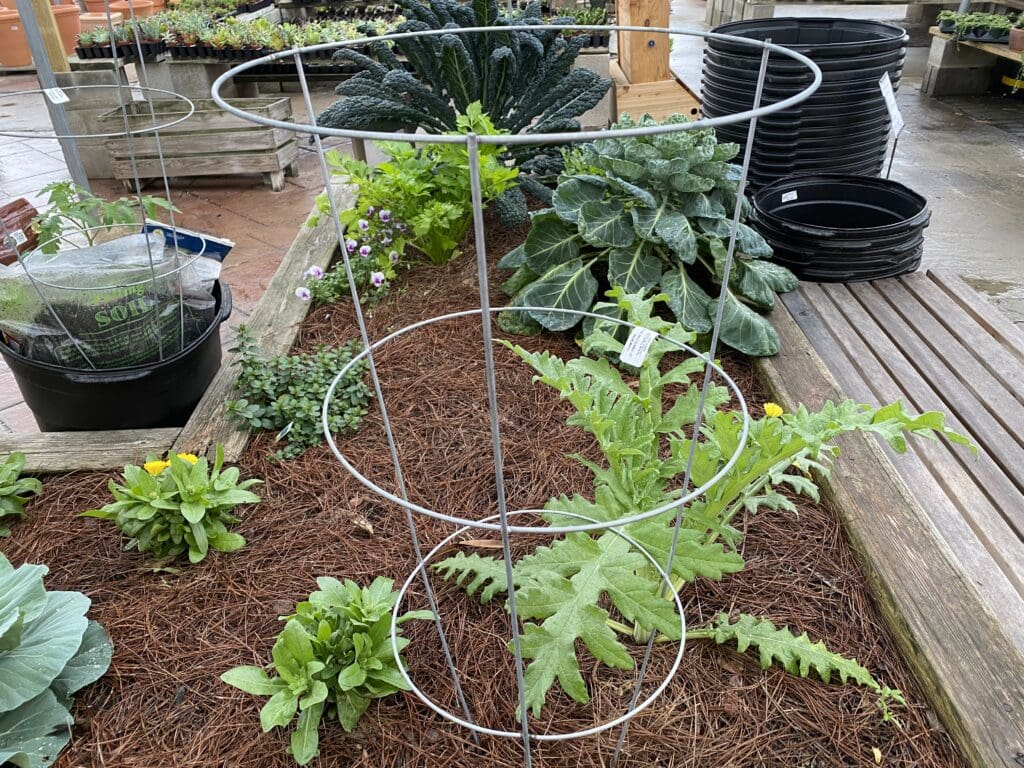
If you’re following this guide, get ready for big growth! Be sure to give your plants adequate spacing to grow to their mature size. For example, tomatoes should be planted a good 4 feet apart, peppers should be 2.5-3 feet apart, and cucumbers, squash, brocolli, and cauliflower should be planted 18″ apart. Good spacing not only gives them room to grow to their full potential, but also ensures good airflow around the plants and helps prevent pest outbreaks. While plants are small, add/build your support structures! We carry tomato cages, wooden trellises, pre-made bamboo trellises, and bamboo poles or t-posts if you want to build your own. And be sure to have some good flexible garden tape!
4. Water Wisely
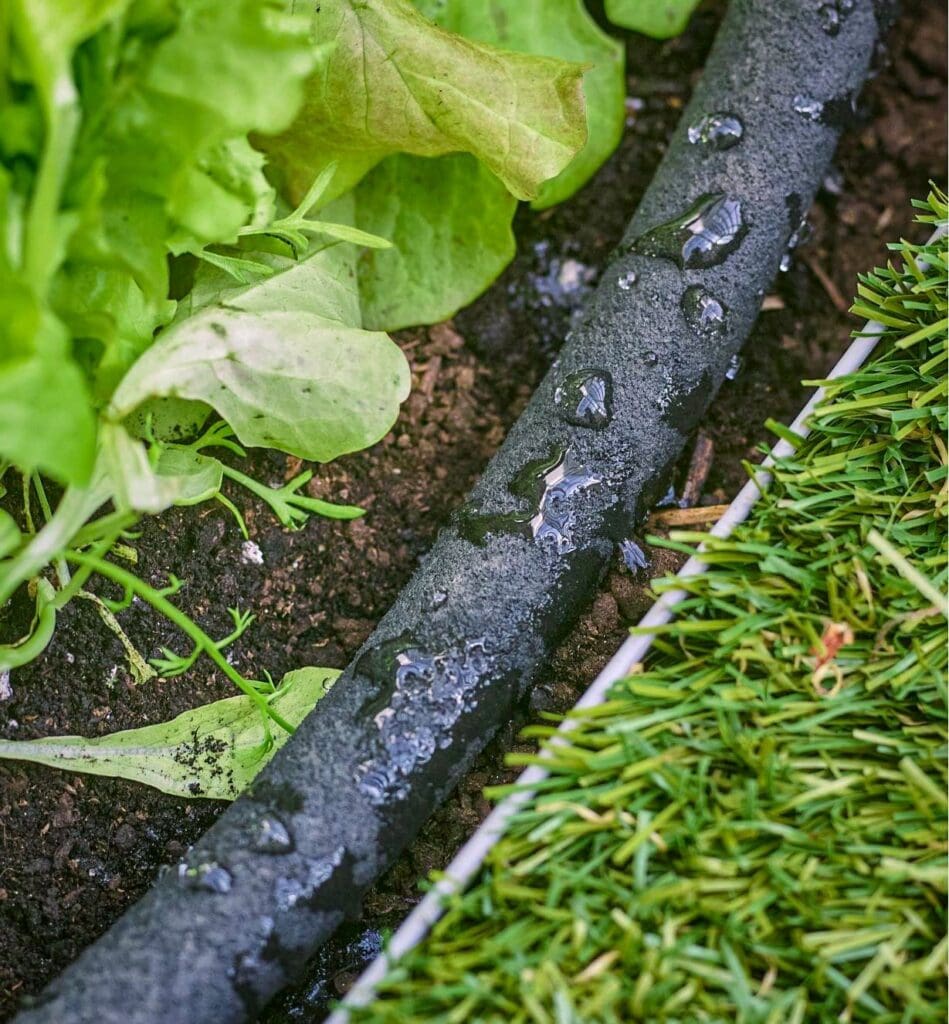
New veggie plants need water every day, preferably in the morning. Once established, you can water some plants less frequently. The best thing to do is to check your garden every day. You’ll get a good sense for which plants are thirstier than others. Soaker hoses can be a big help. Just snake them through your veggie beds and turn on the tap or use a timer. When watering by hand, think like a soaker hose – water slowly and gently at soil level. Watering over the top of your plants or splashing soil up onto the plants invites fungal disease and pests. A good mulch layer can help prevent soil from splashing up onto your plants, plus prevent weeds and help retain moisture. We love pine straw mulch for veggie gardens because its so easy to work with and it does a better job at suppressing weeds.
5. Fertilize Regularly
If you want your veggies to feed you, you gotta feed them! Plants require LOTS of energy to produce fruit. If you take anything away from this blog, remember DeAnna’s organic fertilizer regimen: granular Plant Tone on the 1st of the month, followed up by liquid Hasta Gro on the 15th. The granular fertilizer will slowly break down and feed your roots, while the liquid Hasta Gro sprayed over the leaves will make the foliage thick and strong. If you want strong plants and amazing veggie production, follow this schedule!
6. Be Ready for Pests
Insect pests in the veggie garden are pretty much inevitable, but controllable. Just like watering, the best way to control pests in the veggie garden is to inspect your plants every day and catch any problems early. We recommend having these 3 organic products on hand: Bt for caterpillars, diatomaceous earth for crawling insects like ants, and spinosad soap for beetles, aphids, and spider mites. If you’re not sure what’s eating your veggies, send us a photo or bring in a sample and we can identify and help you control.
7. Harvest Consistently!
If you follow this guide, you’re going to be set up for a bountiful harvest! It’s very important to harvest regularly so you get to enjoy all your efforts. Some veggies, like beans, squash, and cucumbers will need to be harvested daily! If you’ve grown cucumbers before, you know that one day they’ll look perfect and ripe, then the next day they’ll be twice the size and beyond their prime – huge and fibrous and flavorless. Keep in mind too that birds, bugs, and other critters like ripe fruit too. Harvest it before they do! When you harvest regularly, you’re also helping the plant redirect energy to producing more fruit.
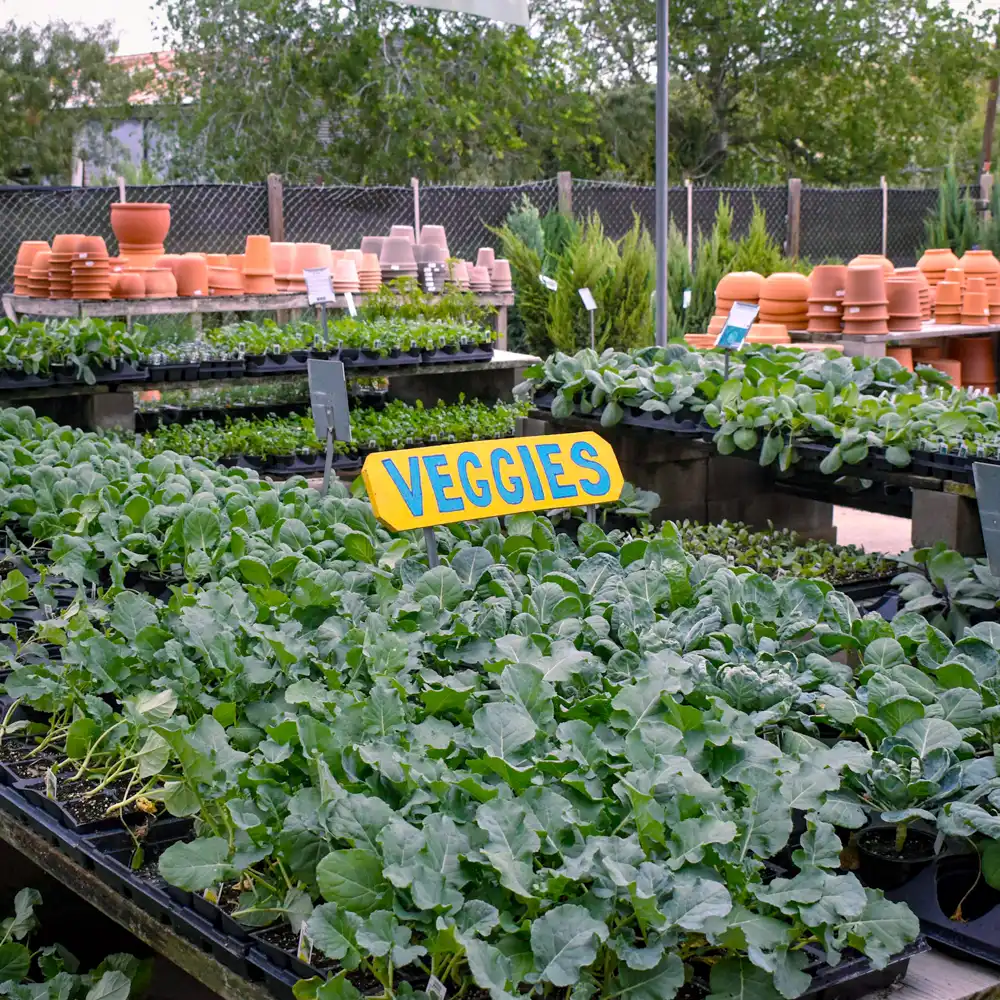
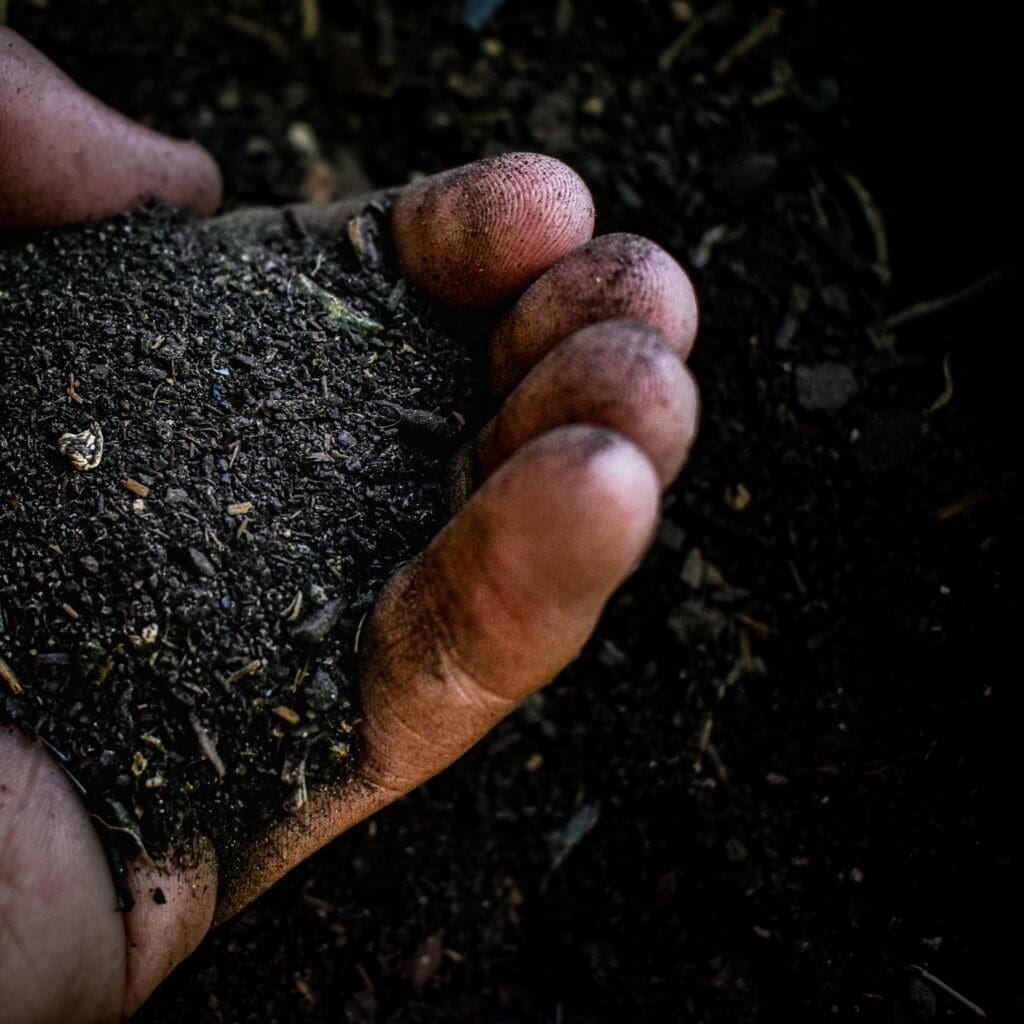

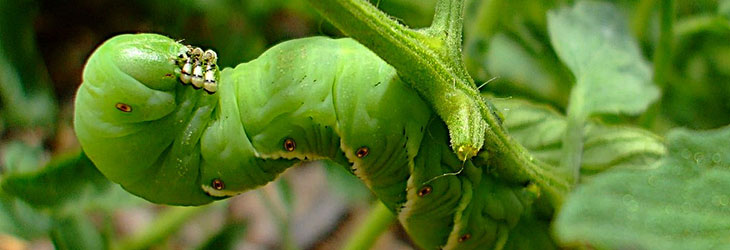
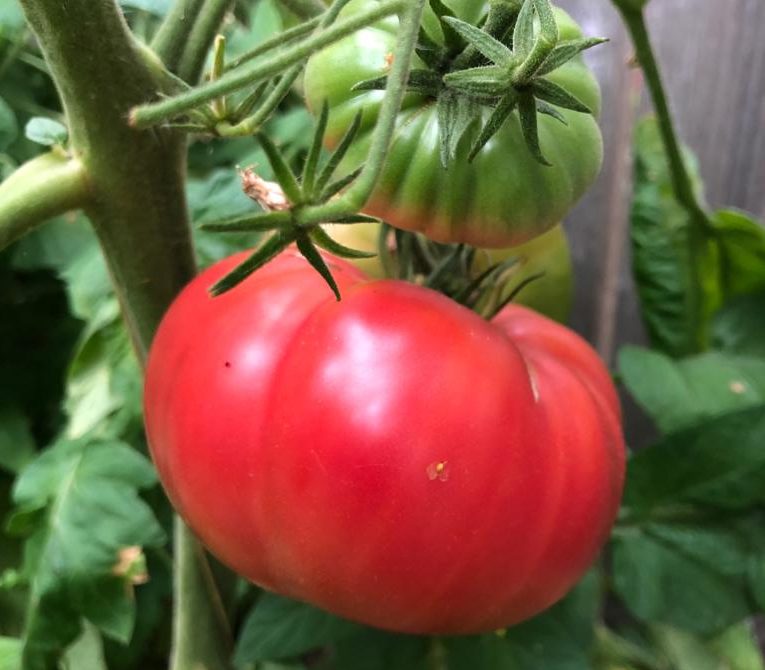


Leave a Reply